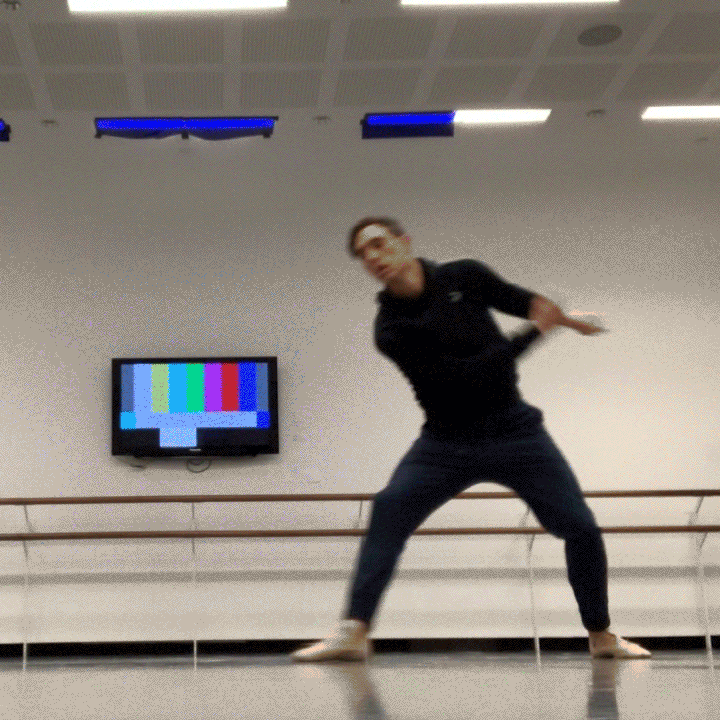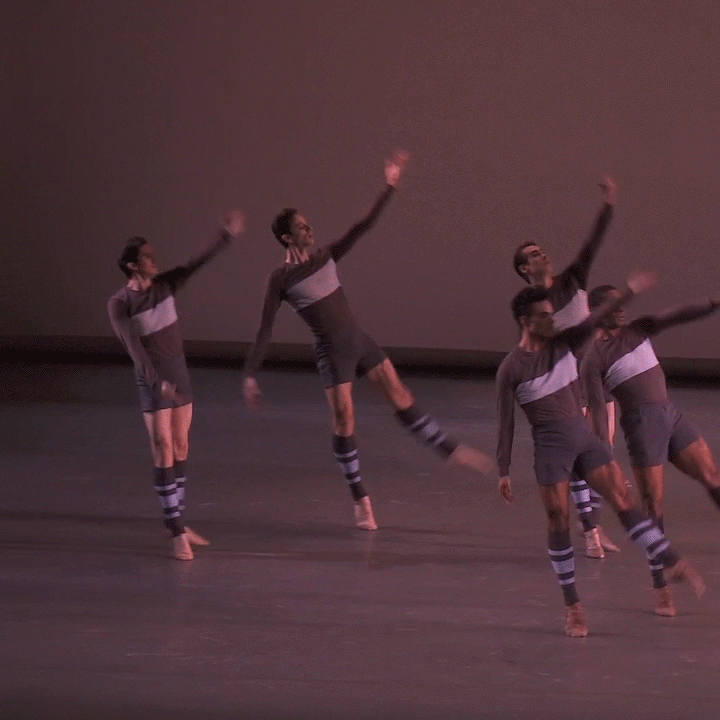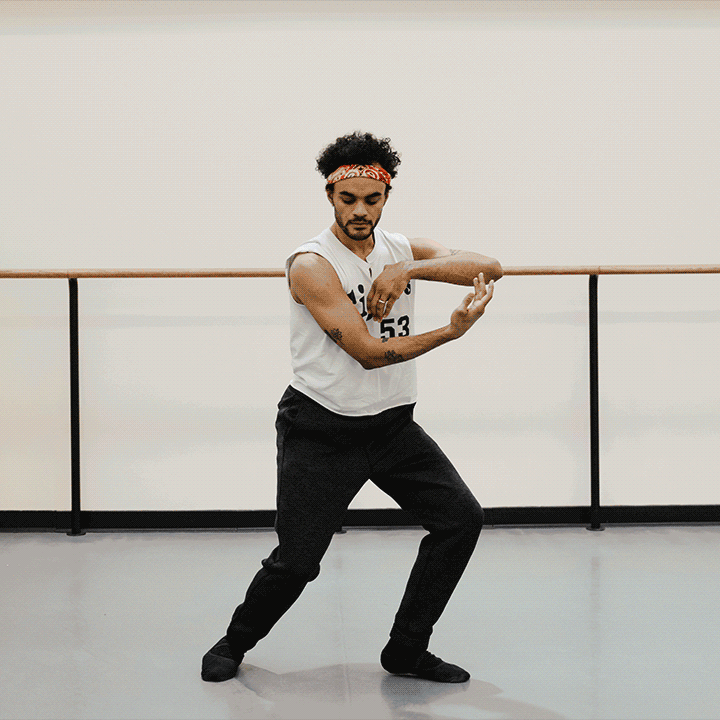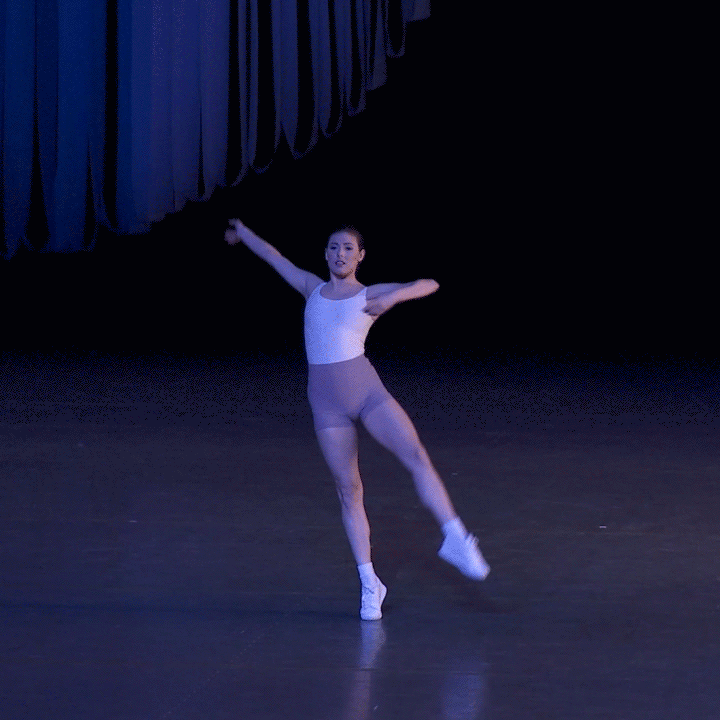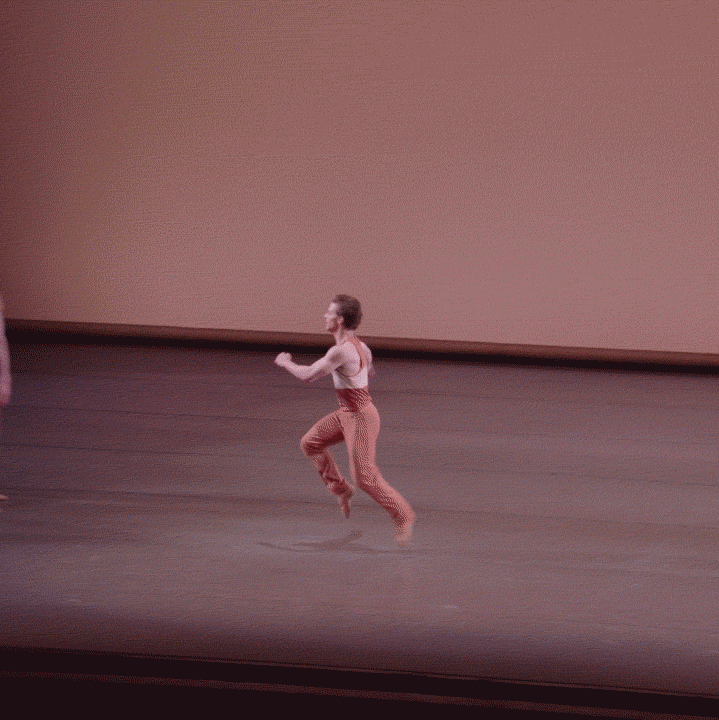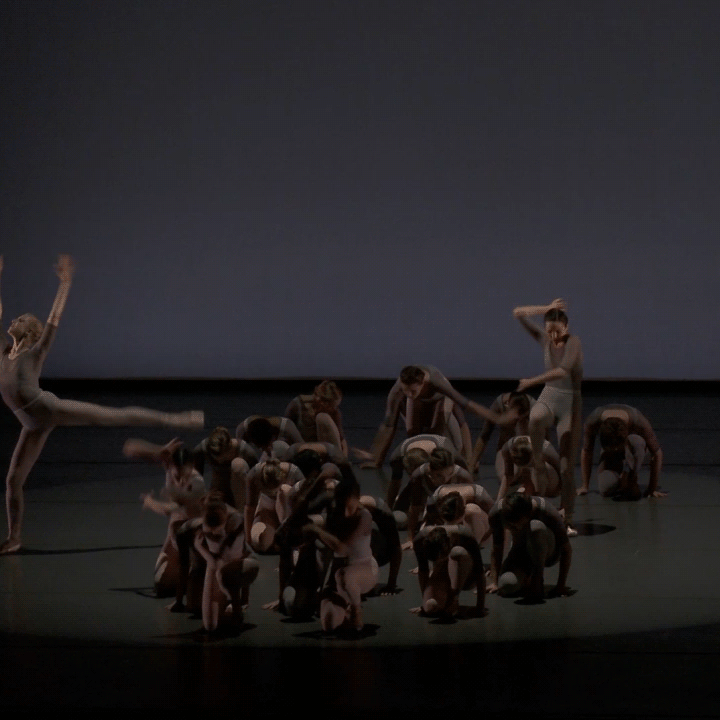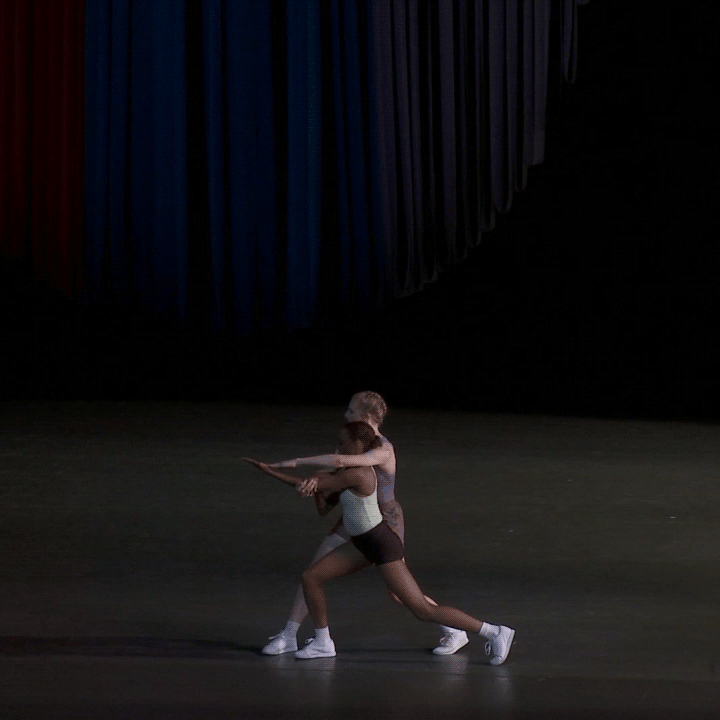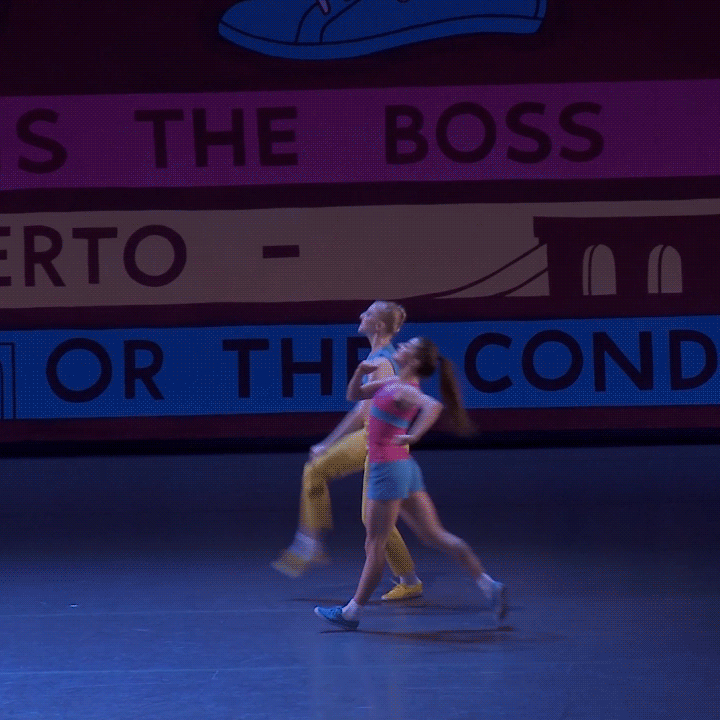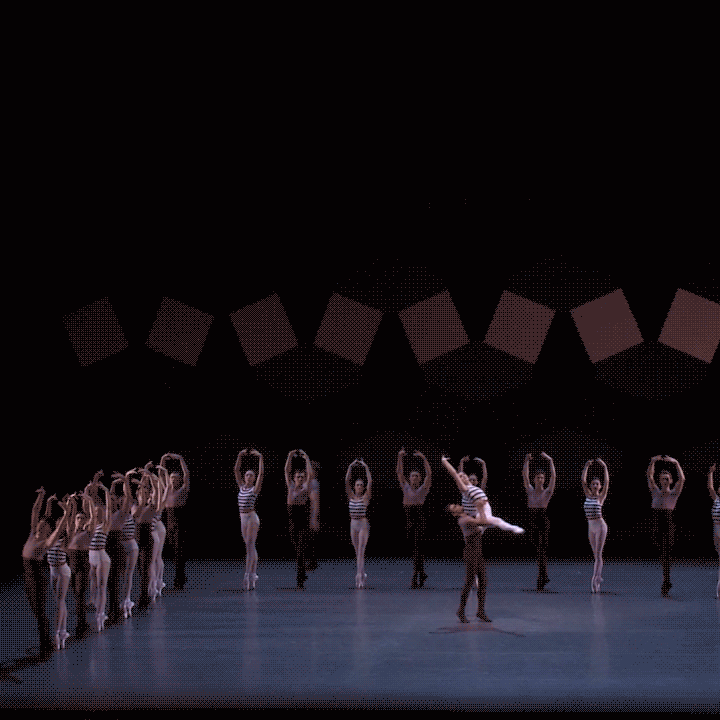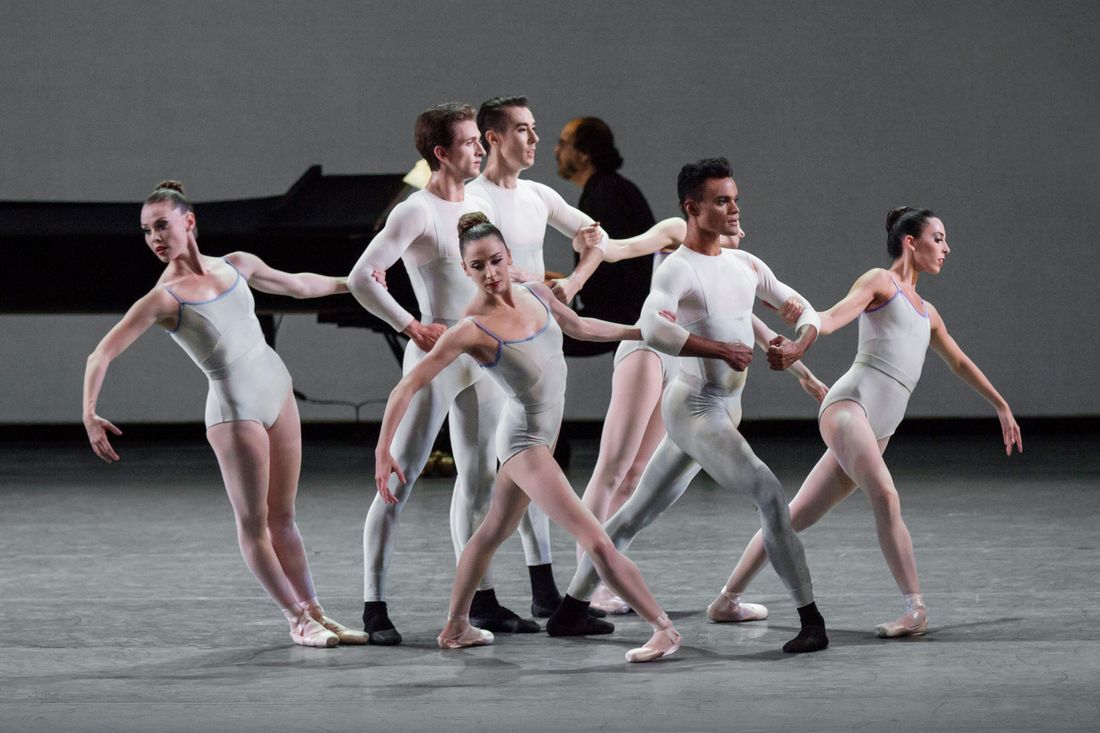
Watch an evening of New York City Ballet’s seminal works, and it’s easy to see a through-line from the company’s co-founder George Balanchine to Justin Peck, its resident choreographer since 2014. Both use the vocabulary of classical ballet and strip it of fussy flourishes. They’re precise in their attention to the music. And yet a Peck ballet doesn’t look like anything else. He is mathematical like Balanchine, but there’s more of a lightness, an everyday quality that feels playful, even when the steps are technically arduous. He can be surprising and direct; at the same time, his movements make the performers seem like they’re dancing in private, or for each other, barely acknowledging the audience. His work can feel surprising, zigging when you expect a zag, tilting a dancer off balance or pulling her in opposing directions. The result is thrilling and joyous, contemporary even as it’s classical.
Peck started as a tap dancer, and he credits tap for his obsessive attention to the music, which informs everything from the number of dancers onstage to the individual movements. On January 26, City Ballet will premiere Peck’s first full-length ballet, which will be his 23rd work for the company. It’s set to the music of composer Aaron Copland—another artist with a very clear signature—and it’s bound to be the Peckiest Peck ballet yet. “His choreography just speaks the music so clearly,” says Craig Baldwin, the company’s accompanist. “Even if there’s no music playing—you can look onstage; you can probably pick the page that the music is going to be from.” To give just one example: The clarinet solo is danced as a solo, and for the finale, in which the entire orchestra is playing, all 30 dancers are onstage at once.
“In the Copland, there’s just this perfect blend of architecture and geometry moving the bodies through space and the emotional pulse of the music,” says choreography-team member Patricia Delgado (who also happens to be Peck’s wife). In honor of this peak Peck moment, we asked Peck and his collaborators to decode his other artistic tics.
Peck’s steps often require the dancers to shift their weight in counterintuitive ways, pulling the upper body one way while the lower does something else entirely. “His coordination from one movement to the next is very specific to his own abilities,” says principal Anthony Huxley.
Peck was a dancer with the company for 12 years before becoming its resident choreographer, and he works out every movement on his own body before he brings it to rehearsal, recording it on his phone.
At first, the steps can seem unnatural, says Delgado. “The minute you figure it out on your body, it feels like you’ve gained this new coordination.” Like patting your stomach while rubbing your head.
“He loves an awkward movement that grows into a beautiful movement,” says repertory director Craig Hall. “He does this thing with his arms, where the arms come in and then they go out either to a T or into a lifted jeté,” as if they were growing from inside the dancer. “Sometimes what he’s asking for is something that we have never seen,” says Delgado, “so you have to almost apply your body in a different way.”
Relaxed Faces
Peck dislikes showy ballet acting. “He builds the emotion in the steps,” says Huxley. He gives dancers an image to work with. “He’ll be like, ‘Scoop the best ice cream you’ve ever had at a Michelin-star restaurant’ or ‘Rake the leaves,’” says soloist Harrison Coll.
Exploding Motions
Classical ballet steps get knocked off balance. “It’s like you’re this bomb building up,” says Huxley. “It’s very internal, then suddenly you explode and the energy builds up again.”
Sneaker Feet
Peck frequently choreographs his ballets in sneakers. “That informs his way of moving, even though we’re in ballet shoes,” says principal Sara Mearns. “We might jump and our feet might be flexed for a second.”
Tap Timing
Peck came to ballet via tap and musical theater and counts the 1995 musical Bring in Da Noise, Bring in Da Funk as an influence. “A lot of my musicality is rooted in tap,” he says. “Even though it’s silent, the quality of the movement can be percussive.”
Where Balanchine’s ballets are propulsive, “Justin rewinds the body, so we’re going almost in reverse,” says Delgado. “But when you watch him demonstrate, you don’t see a reversal; you see movement forward.” With principal Tiler Peck (no relation), he created a rewinding step she thinks of as a pointe-shoe moonwalk. “He loves that on me, but you might miss it, it happens so fast,” she says.
Justin Peck sees these kinds of movements as subverting the audience’s expectations. “It’s playing against the conventions of classicism in ballet,” he says. “You think they’re gonna go this way, and they go the other way, and that provokes a kind of excitement in the viewer. It’s a lot of thinking about how the body can take the road less traveled.”
Instead of chests out, smiling faces turned upward, Peck’s dancers tend to act like the audience isn’t there. “He wants the audience to work a little bit,” says Mearns. “Like you got to come to us.” In 2017’s The Times Are Racing, “there’s a cluster of dancers and their backs are to everyone,” says Hall. “You don’t know what’s happening in the center, but we’re trying to get in.”
A Loose Narrative
There’s no overt story in a Peck ballet, but there is a dynamic among characters left open to interpretation. “The audience meets it halfway, and they find themselves in what they’re watching,” says Peck.
“In Rodeo, there’s a moment where this super-compact dancer executes this incredibly kinetic kind of hyperspeed solo. It’s super-impressive,” says Peck. “And it ends with him running across the stage — he leaps into the air and cannonballs and gets like caught by these five other dancers.” When he stands up, he’s face-to-face with a dancer a good foot taller than him. The surprise of the moment inevitably stirs a ripple of laughter from the members of the audience, cutting through the hypnotic reverence and snapping them back to attention.
Classical ballet choreography loves a ta-da moment, when a dancer holds a position at its peak. In a Peck ballet, the movement often barely reaches the full extension before moving on.
“He loves an expansion, where there’s a snapping moment where you reach out, you go to the height of it, then you bring it back in,” says Hall, who named a Peckian développé in which the legs snap back together just as the leg fully extends “the Venus Fly Trap.” “I don’t like moments that hold the shape just to display a shape,” says Peck. “I find that to be so anti-dance. To me, dances should not necessarily be easy to capture in a photograph.”
For all his planning, Peck’s favorite steps are often the happy accidents of the studio. Soloist India Bradley recalls working on a pas de deux in Partita. “We were trying one step over and over again,” she says. “He was hitting a roadblock and was like, ‘How do you feel right now?’ Then I just fell to the side and we ended up with a step where we were falling on top of each other.”
In Peck’s ballet Easy, instead of gracefully exiting, two dancers power walk, elbows out, from the back of the stage. “It’s this random thing he saw playing around in the studio,” says Hall. The “mistakes” also lend his ballets a more human quality. “We’re not expected to be robots,” says Coll. “I’ve always felt like Justin wants me to be me.”
Tiler Peck likens how Justin Peck moves the group collectively to a Rubik’s Cube. In Everywhere We Go, the corps is arranged behind her in a migrating L-shape. “It’s like a trash compactor or something,” she says. “They’re closing in on me in this L.” Delgado says, “I told Justin once it’s almost like you’re building something. He said, ‘I think if I wasn’t a choreographer, I’d be an architect.’”
Open Lighting
The lighting and set design are often intentionally spare. “The score itself is extremely colorful,” says lighting designer Brandon Stirling Baker. “And therefore the design does not need a lot of color.” You’ll never see a follow spot in a Peck ballet. “He doesn’t put this overindulgent drama on top of the movement,” says Mearns. “The movement makes it dramatic.”
Secondary Action
The corps de ballet is usually up to something interesting. “Unless there’s just one dancer onstage, the solo is almost never just a solo,” says Hall.
Peck’s steps often require the dancers to shift their weight in counterintuitive ways, pulling the upper body one way while the lower does something else entirely. “His coordination from one movement to the next is very specific to his own abilities,” says principal Anthony Huxley.
Peck was a dancer with the company for 12 years before becoming its resident choreographer, and he works out every movement on his own body before he brings it to rehearsal, recording it on his phone.
At first, the steps can seem unnatural, says Delgado. “The minute you figure it out on your body, it feels like you’ve gained this new coordination.” Like patting your stomach while rubbing your head.
“He loves an awkward movement that grows into a beautiful movement,” says repertory director Craig Hall. “He does this thing with his arms, where the arms come in and then they go out either to a T or into a lifted jeté,” as if they were growing from inside the dancer. “Sometimes what he’s asking for is something that we have never seen,” says Delgado, “so you have to almost apply your body in a different way.”
Relaxed Faces
Peck dislikes showy ballet acting. “He builds the emotion in the steps,” says Huxley. He gives dancers an image to work with. “He’ll be like, ‘Scoop the best ice cream you’ve ever had at a Michelin-star restaurant’ or ‘Rake the leaves,’” says soloist Harrison Coll.
Exploding Motions
Classical ballet steps get knocked off balance. “It’s like you’re this bomb building up,” says Huxley. “It’s very internal, then suddenly you explode and the energy builds up again.”
Sneaker Feet
Peck frequently choreographs his ballets in sneakers. “That informs his way of moving, even though we’re in ballet shoes,” says principal Sara Mearns. “We might jump and our feet might be flexed for a second.”
Tap Timing
Peck came to ballet via tap and musical theater and counts the 1995 musical Bring in Da Noise, Bring in Da Funk as an influence. “A lot of my musicality is rooted in tap,” he says. “Even though it’s silent, the quality of the movement can be percussive.”
Where Balanchine’s ballets are propulsive, “Justin rewinds the body, so we’re going almost in reverse,” says Delgado. “But when you watch him demonstrate, you don’t see a reversal; you see movement forward.” With principal Tiler Peck (no relation), he created a rewinding step she thinks of as a pointe-shoe moonwalk. “He loves that on me, but you might miss it, it happens so fast,” she says.
Justin Peck sees these kinds of movements as subverting the audience’s expectations. “It’s playing against the conventions of classicism in ballet,” he says. “You think they’re gonna go this way, and they go the other way, and that provokes a kind of excitement in the viewer. It’s a lot of thinking about how the body can take the road less traveled.”
Instead of chests out, smiling faces turned upward, Peck’s dancers tend to act like the audience isn’t there. “He wants the audience to work a little bit,” says Mearns. “Like you got to come to us.” In 2017’s The Times Are Racing, “there’s a cluster of dancers and their backs are to everyone,” says Hall. “You don’t know what’s happening in the center, but we’re trying to get in.”
A Loose Narrative
There’s no overt story in a Peck ballet, but there is a dynamic among characters left open to interpretation. “The audience meets it halfway, and they find themselves in what they’re watching,” says Peck.
“In Rodeo, there’s a moment where this super-compact dancer executes this incredibly kinetic kind of hyperspeed solo. It’s super-impressive,” says Peck. “And it ends with him running across the stage — he leaps into the air and cannonballs and gets like caught by these five other dancers.” When he stands up, he’s face-to-face with a dancer a good foot taller than him. The surprise of the moment inevitably stirs a ripple of laughter from the members of the audience, cutting through the hypnotic reverence and snapping them back to attention.
Classical ballet choreography loves a ta-da moment, when a dancer holds a position at its peak. In a Peck ballet, the movement often barely reaches the full extension before moving on.
“He loves an expansion, where there’s a snapping moment where you reach out, you go to the height of it, then you bring it back in,” says Hall, who named a Peckian développé in which the legs snap back together just as the leg fully extends “the Venus Fly Trap.” “I don’t like moments that hold the shape just to display a shape,” says Peck. “I find that to be so anti-dance. To me, dances should not necessarily be easy to capture in a photograph.”
For all his planning, Peck’s favorite steps are often the happy accidents of the studio. Soloist India Bradley recalls working on a pas de deux in Partita. “We were trying one step over and over again,” she says. “He was hitting a roadblock and was like, ‘How do you feel right now?’ Then I just fell to the side and we ended up with a step where we were falling on top of each other.”
In Peck’s ballet Easy, instead of gracefully exiting, two dancers power walk, elbows out, from the back of the stage. “It’s this random thing he saw playing around in the studio,” says Hall. The “mistakes” also lend his ballets a more human quality. “We’re not expected to be robots,” says Coll. “I’ve always felt like Justin wants me to be me.”
Tiler Peck likens how Justin Peck moves the group collectively to a Rubik’s Cube. In Everywhere We Go, the corps is arranged behind her in a migrating L-shape. “It’s like a trash compactor or something,” she says. “They’re closing in on me in this L.” Delgado says, “I told Justin once it’s almost like you’re building something. He said, ‘I think if I wasn’t a choreographer, I’d be an architect.’”
Open Lighting
The lighting and set design are often intentionally spare. “The score itself is extremely colorful,” says lighting designer Brandon Stirling Baker. “And therefore the design does not need a lot of color.” You’ll never see a follow spot in a Peck ballet. “He doesn’t put this overindulgent drama on top of the movement,” says Mearns. “The movement makes it dramatic.”
Secondary Action
The corps de ballet is usually up to something interesting. “Unless there’s just one dancer onstage, the solo is almost never just a solo,” says Hall.


